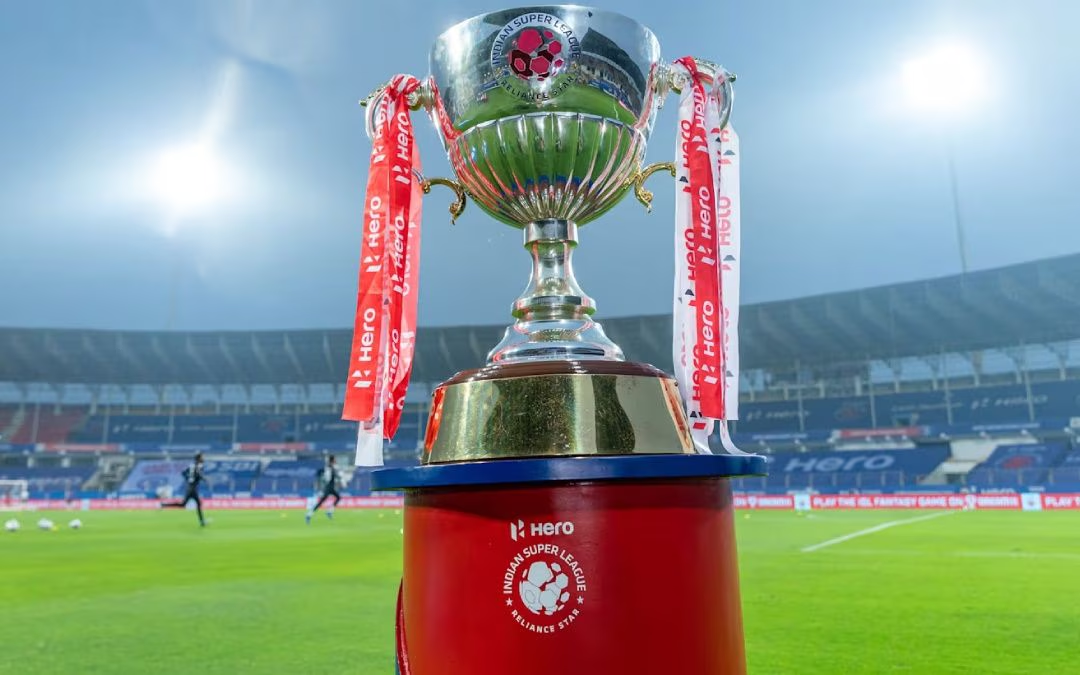India’s football heartbeat is faltering. The Indian Super League (ISL), the country’s flagship football competition, is on hold and the reason isn’t a pandemic or an organiser error it’s a governance deadlock between the AIFF and FSDL. And the fallout is spreading: players unsure of contracts, clubs scrambling, youth programmes stalling, fans anxious.
Story Behind It

On July 11, 2025, FSDL Reliance-backed owner and operator of ISL officially wrote to AIFF and ISL clubs to say the 2025–26 season could not proceed without clarity on its commercial rights under the Master Rights Agreement (MRA), which expires on December 8, 2025 and has been the bedrock of ISL operations since 2010. FSDL said flatly: “We are unable to effectively plan, organise or commercialise the season.” Source: TelegraphIndia
Just a day later, on July 12, AIFF released a statement acknowledging the impasse: negotiations for the MRA began in late 2024, continued in early 2025, but were formally halted after a Supreme Court directive in April forbade any renewed agreement until it ruled on AIFF’s governance constitution. That legal limbo has frozen everything. Source: Livemint
Sunil Chhetri’s Emotional Plea

Sunil Chhetri India’s most revered footballer has stepped up, not with tactical analysis, but with a plea. He wrote on social media:
“Everybody in the Indian football ecosystem is worried, hurt, scared…”
He urged everyone to stay calm and united as the crisis unfolds.
In interviews, Chhetri detailed how a sabbatical announcement that initially felt like a welcome “fortnight delay” spiraled into an indefinite freeze and how players across clubs are reaching out, distraught and uncertain. Source: Indiatoday
Who’s Behind What?
FSDL, since 2014, has paid ₹50 crore annually to AIFF under the MRA in exchange for broadcasting, sponsorship, and promotional rights. This agreement ends in December 2025. FSDL now proposes a new governance model: a holding company split with 60% clubs, 26% FSDL, and only 14% AIFF, sharing profits instead of fixed fees.
AIFF, reliant on FSDL’s ₹50 crore to fund operations and development, resists the model—14% offers far less and delays the reliable income it depends upon. Negotiations stalled, and the Supreme Court’s order froze any new deal until AIFF’s constitution case is decided.
Clubs And Players Are In Doubt

ISL clubs across the country paused pre-season training and withdrew from tournaments like the 2025 Durand Cup. Teams like Bengaluru FC, Kerala Blasters, Chennaiyin FC, Odisha FC, Mumbai City FC, Hyderabad FC all have halted operations.
Chennaiyin FC have already sacked coach Owen Coyle, citing financial strain from planning uncertainty. Recruitments, staff hires, sponsorships, and broadcasting deals are all on hold.
Indian Football Fans Are Paying the Price

Players and support staff are directly impacted. Without matches, training routines collapse, contract renewals vanish, and some income sources dry up. Chhetri pointed out that he, his teammates, physiotherapists, kit managers, and operations staff—many live month-to-month on match fees and club stipends—are anxious.
Youth setups run by ISL clubs key development pathways—are now idle. The broader plan of building a pyramid and including institutional leagues is overshadowed.
Governance vs. Growth
| AIFF Position | FSDL Position |
|---|---|
| Ensure stable funding via ₹50 crore annual fees into youth development | Push for shared-ownership model and long-term profit structure |
| Seeks accountability and clarity, including promotion/relegation system | Prioritizes control over commercial operations in a franchise model |
A Broader Threat

It’s not just clubs and contracts, it’s the soul of Indian football. ISL was meant to professionalize sport in India; delay threatens progress. The gap between I-League and ISL, youth scouting, and grassroots growth all stall without a stable top-tier league.
Reddit discussions underscore frustration that AIFF officials delayed talks until late, meaning AIFF lacks leverage; FSDL suffered losses (₹5,000 crore+ since 2014), and now the federation fears losing easy revenue.
How This Might Be Resolved
- Short-term MRA extension under current conditions until the Supreme Court rules.
- A balanced hybrid structure that blends FSDL’s commercial strength with AIFF’s developmental mandate, if new revenue share is structured fairly.
- Setting up an impact task force: club CEOs, player reps, AIFF, FSDL, and legal experts to iron out promotion/relegation, youth structure, revenue sharing, and governance.
- Supreme Court verdict on AIFF’s new constitution which could unlock MRA talks. Experts expect possible clearance by late July–August, paving way for an ISL start by October.
In Chhetri’s Words: Why We Care

Chhetri’s plea wasn’t strategic, it was emotional, almost paternal. It was for every player, every unseen kitman, every physio living pay-check to pay-check. Reactions and unity from players could pressure both sides into compromise.
He ended with hope:
“Keep training… it will resume.” That hopeful echo is the tether keeping India’s football dream alive.
ISL governance dispute, AIFF FSDL negotiation, ISL season on hold, impact on Indian football players, Sunil Chhetri reaction.
Check out the latest article on Sportspedia Zone about “The Mental Burnout of Test Debutants in the Bazball Era”
Bookmark Sportspediazone for more sporting updates and,
Stay tuned!


[…] Is the Governance Battle Between AIFF and FSDL Putting Indian Football at Risk? […]